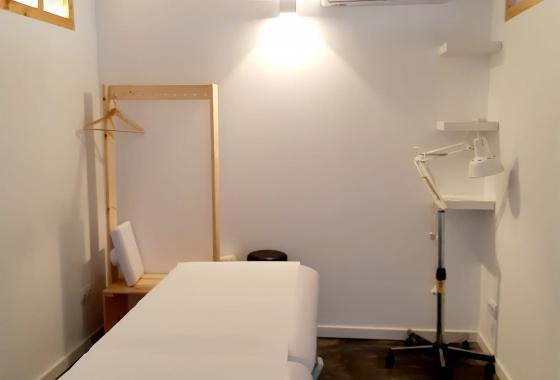Piriformis Syndrome occurs when the piriformis muscle presses on the sciatic nerve, but why does this happen? What causal factors are associated with its appearance? What are your characteristic symptoms of Pyramidal or Piriformis Muscle Syndrome? You will find the answers to these questions and much more in the FisioClinics Palma de Mallorca article below.
What is Piriformis Syndrome?
Pyramidal Muscle Syndrome is a condition in which the pyramidal / piriformis muscle found in the gluteal region from the top of the femur to the edge of the sacrum, when the pelvic bone below the lumbar vertebrae contracts, causes pain and tension, accompanied by tingling and paralysis.
The symptoms of Pyramidal Muscle Syndrome are very similar and often closely related to sciatica. In some cases, this condition actually causes stimulation of the sciatic nerve. As the sciatic nerve passes under or into the piriformis, contraction or inflammation of the tissues in this area compresses the sciatic nerve and you can develop symptoms of sciatica.
What are the symptoms of Piriformis Syndrome?
The initial symptoms of Piriformis Syndrome include severe pain in the buttocks or gluteal region that can radiate down the lower extremity in the leg and down to the foot. The characteristics of pain are:
-
Pain is often worse at night and increases with hip adduction and internal rotation.
-
Numbness and paraesthesia in the gluteal region that radiates from the area of the sciatic nerve.
-
An abnormal gait may develop, resulting in concomitant back and hip pain.
-
Bending at the waist and hips increases pain in most sufferers.
-
Gluteal and lower extremity weakness and ultimately muscle atrophy are seen in advanced, untreated cases of this syndrome.
What Causes False Sciatica?
In some cases, symptoms occur after direct trauma to the gluteal region, and sometimes the syndrome is the result of repetitive movements of the hip and lower limb, or from repeated pressure on the underlying piriformis muscle and sciatic nerve. The causal factors of false sciatica (Pyramidal Muscle Syndrome) that we can highlight are:
-
Over training and hypertension especially during the race.
-
Hyperlordosis or inequality of the lower extremities.
-
Absence of abdominal strength.
-
Scarring.
-
Asymmetry or genetic abnormality of the pyramidal muscle.
-
Biomechanical alterations in the hip.
-
Muscle imbalance.
-
Bad postures sustained over time.
-
Visceral dysfunctions of the small intestine, kidneys or uterus-prostate.
How is the medical diagnosis of Piriformis Syndrome made?
Piriformis syndrome is often misdiagnosed as sciatica; Hip radiographs and electromyography make it possible to distinguish between diseases. First, the physical clinical examination is of utmost importance, but additional examinations are often necessary, thus the necessary studies may include:
-
X-rays of the back, hip, and pelvis can help rule out other diseases.
-
Electromyogram (EMG): distinguishes between lumbar nerve root involvement and piriformis syndrome.
-
Magnetic resonance imaging (MRI): the back is necessary if you suspect a herniated disc, a narrow lumbar canal, or extensive lesions of the involved space. An MRI of the hip can also highlight the cause of the sciatic nerve compression.
-
Depending on the case, blood tests may be required, including complete blood count, uric acid, and sedimentation rate.
 Physiotheraphy
Physiotheraphy Osteopathy
Osteopathy Massage
Massage Lymphatic
Lymphatic Group classes
Group classes Home
Home Baby
Baby










































